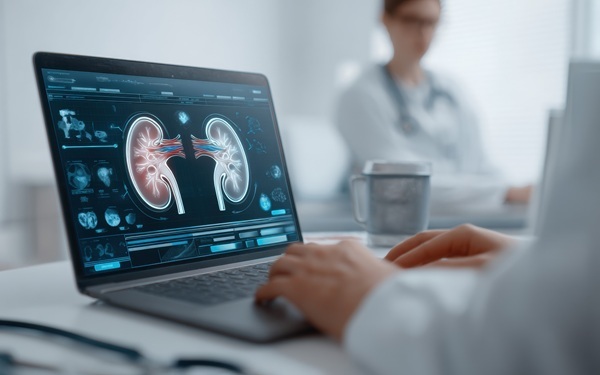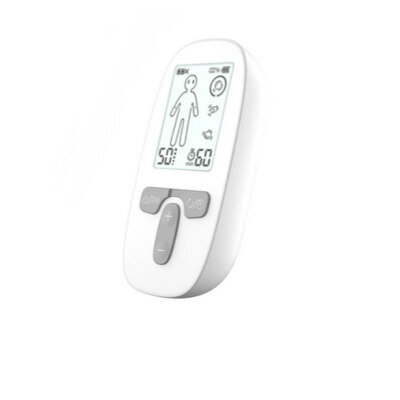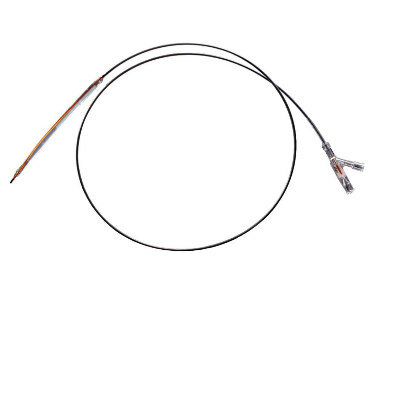Innovative Injectable Gel Accelerates Tissue Healing 
|
By HospiMedica International staff writers Posted on 17 Jun 2015 |

Image: Tissue infiltrates the injectable MAP spheres gel fills, promoting regeneration (Photo courtesy of UCLA).
A new hydrogel creates an instant scaffold of microporous annealed particles (MAP) that allows tissue regeneration to form within its cavities.
Developed by researchers at the University of California, Los Angeles (UCLA; USA), the injected hydrogel—filled with the microscopic synthetic polymer MAP spheres, each about the width of a human hair—forms a packed cluster that completely fills the wound cavity. New tissue quickly grows into the voids between the microspheres; as the MAP spheres degrade into the body, a matrix of repair tissue is left where the wound once was. New tissue then continues to grow until the wound is completely healed.
The researchers succeeded in demonstrating that the MAP hydrogel can promote the growth of new cells and formation of networks of connected cells at previously unseen rates. During in vivo tests, the researchers observed significant tissue regeneration in the first 48 hours, with much more healing over five days compared to other materials in use today. According to the researchers, the combination of microporosity and injectability will enable novel routes to tissue regeneration. The study was published on June 2, 2015, in Nature Materials.
“The beauty of the MAP gel is that there are no other added growth factors that other technologies require to attract cells into the material,” said study coauthor Westbrook Weaver, PhD, of the UCLA Henry Samueli School of Engineering and Applied Science. “The geometry of the MAP gel networks entices cells to migrate into the gel without the need for anything other than a cell adhesive peptide, so that the cells can grab onto the gels.”
Related Links:
University of California Los Angeles
Developed by researchers at the University of California, Los Angeles (UCLA; USA), the injected hydrogel—filled with the microscopic synthetic polymer MAP spheres, each about the width of a human hair—forms a packed cluster that completely fills the wound cavity. New tissue quickly grows into the voids between the microspheres; as the MAP spheres degrade into the body, a matrix of repair tissue is left where the wound once was. New tissue then continues to grow until the wound is completely healed.
The researchers succeeded in demonstrating that the MAP hydrogel can promote the growth of new cells and formation of networks of connected cells at previously unseen rates. During in vivo tests, the researchers observed significant tissue regeneration in the first 48 hours, with much more healing over five days compared to other materials in use today. According to the researchers, the combination of microporosity and injectability will enable novel routes to tissue regeneration. The study was published on June 2, 2015, in Nature Materials.
“The beauty of the MAP gel is that there are no other added growth factors that other technologies require to attract cells into the material,” said study coauthor Westbrook Weaver, PhD, of the UCLA Henry Samueli School of Engineering and Applied Science. “The geometry of the MAP gel networks entices cells to migrate into the gel without the need for anything other than a cell adhesive peptide, so that the cells can grab onto the gels.”
Related Links:
University of California Los Angeles
Latest Critical Care News
- Biodegradable Patch Repairs Damaged Tissue After Heart Attack
- Magnetically Guided Microrobots to Enable Targeted Drug Delivery

- Smart Nanomaterials Detect and Treat Traumatic Brain Injuries Simultaneously
- Earlier Blood Transfusion Could Reduce Heart Failure and Arrhythmia in Heart Disease Patients
- 'Smart' Shirt Detects Epileptic Seizures in Real Time
- Skin Patch Measures Effectiveness of Flu/COVID Vaccines in 10 Minutes
- Complete Revascularization Reduces Risk of Death from Cardiovascular Causes
- Tiny Fish-Inspired Robots Navigate Through Body to Deliver Targeted Drug Therapy
- Coronary Artery Stenosis Could Protect Patients from Pulmonary Embolism Effects
- Sweat-Powered Sticker Turns Drinking Cup into Health Sensor
- Skin-Mounted 3D Microfluidic Device Analyzes Sweat for Real-Time Health Assessment
- New Therapeutic Brain Implants to Eliminate Need for Surgery
- Stem Cell Patch Gently Heals Damaged Hearts Without Open-Heart Surgery
- Biomaterial Vaccines to Make Implanted Orthopedic Devices Safer
- Deep Learning Model Predicts Sepsis Patients Likely to Benefit from Steroid Treatment
- Programmable Drug-Delivery Patch Promotes Healing and Regrowth After Heart Attack
Channels
Surgical Techniques
view channelNovel Endoscopy Technique Provides Access to Deep Lung Tumors
Detecting lung cancer early can save lives, but diagnosing small tumors deep in the outer regions of the lungs remains a major clinical challenge. Although CT scans frequently identify tiny suspicious... Read more
New Study Findings Could Halve Number of Stent Procedures
When a coronary artery becomes acutely blocked during a heart attack, opening it immediately is essential to prevent irreversible damage. However, many patients also have other narrowed vessels that appear... Read morePatient Care
view channel
Revolutionary Automatic IV-Line Flushing Device to Enhance Infusion Care
More than 80% of in-hospital patients receive intravenous (IV) therapy. Every dose of IV medicine delivered in a small volume (<250 mL) infusion bag should be followed by subsequent flushing to ensure... Read more
VR Training Tool Combats Contamination of Portable Medical Equipment
Healthcare-associated infections (HAIs) impact one in every 31 patients, cause nearly 100,000 deaths each year, and cost USD 28.4 billion in direct medical expenses. Notably, up to 75% of these infections... Read more
Portable Biosensor Platform to Reduce Hospital-Acquired Infections
Approximately 4 million patients in the European Union acquire healthcare-associated infections (HAIs) or nosocomial infections each year, with around 37,000 deaths directly resulting from these infections,... Read moreFirst-Of-Its-Kind Portable Germicidal Light Technology Disinfects High-Touch Clinical Surfaces in Seconds
Reducing healthcare-acquired infections (HAIs) remains a pressing issue within global healthcare systems. In the United States alone, 1.7 million patients contract HAIs annually, leading to approximately... Read moreHealth IT
view channel
EMR-Based Tool Predicts Graft Failure After Kidney Transplant
Kidney transplantation offers patients with end-stage kidney disease longer survival and better quality of life than dialysis, yet graft failure remains a major challenge. Although a successful transplant... Read more
Printable Molecule-Selective Nanoparticles Enable Mass Production of Wearable Biosensors
The future of medicine is likely to focus on the personalization of healthcare—understanding exactly what an individual requires and delivering the appropriate combination of nutrients, metabolites, and... Read moreBusiness
view channel
Philips and Masimo Partner to Advance Patient Monitoring Measurement Technologies
Royal Philips (Amsterdam, Netherlands) and Masimo (Irvine, California, USA) have renewed their multi-year strategic collaboration, combining Philips’ expertise in patient monitoring with Masimo’s noninvasive... Read more
B. Braun Acquires Digital Microsurgery Company True Digital Surgery
The high-end microsurgery market in neurosurgery, spine, and ENT is undergoing a significant transformation. Traditional analog microscopes are giving way to digital exoscopes, which provide improved visualization,... Read more
CMEF 2025 to Promote Holistic and High-Quality Development of Medical and Health Industry
The 92nd China International Medical Equipment Fair (CMEF 2025) Autumn Exhibition is scheduled to be held from September 26 to 29 at the China Import and Export Fair Complex (Canton Fair Complex) in Guangzhou.... Read more















